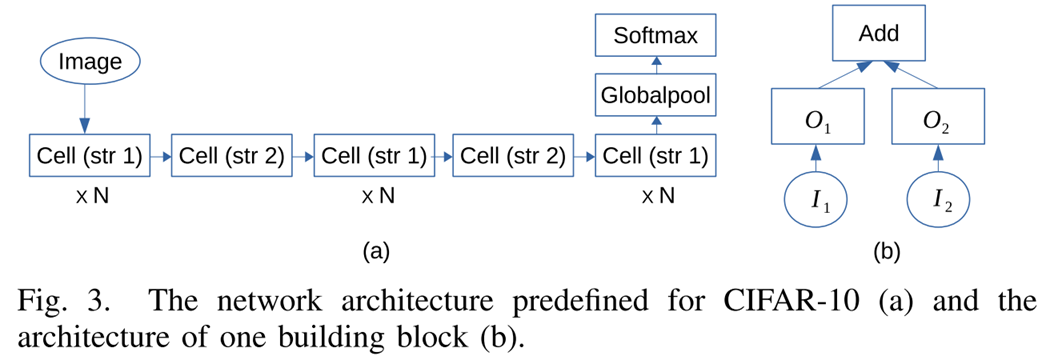[Read Paper] TEA-DNN: the Quest for Time-Energy-Accuracy Co-optimized Deep Neural Networks
TEA-DNN the Quest for Time-Energy-Accuracy Co-optimized Deep Neural Networks
Solved problem
- NAS with considering the available hardware resources
- Leverage energy and execution time
- To my understanding:
- Find an optimal CNN structure for one target hardware platform
Assume that classification error is not affected by the specific hardware a network is run on
The main idea and methods
- Formulate the neural architecture search problem as a multi-objective optimization problem
- Leverage Bayesian optimization to search for Pareto-optimal solutions
- Directly measure the real-world values for all the three objectives (i.e., time, energy and accuracy)
- Why: eliminates the need to model the targeted hardware
Background knowledge
- Pareto-optimal models
- Bayesian optimization
TEA-DNN Optimization Framework

Network Architecture Predefined

The Search Space
- The input space of each building block consists of the outputs of all preceding blocks in the current cell as well as outputs from the two preceding cells
- The operation space includes the following eight functions commonly used in top performing CNNs:
- max 3 × 3: 3 × 3 max pooling
- identity: identity mapping
- sep 3 × 3: 3 × 3 depthwise-separable convolution
- conv 3 × 3: 3 × 3 convolution
- sep 5 × 5: 5 × 5 depthwise-separable convolution
- conv 5 × 5: 5 × 5 convolution
- sep 7 × 7: 7 × 7 depthwise-separable convolution
- conv 7 × 7: 7 × 7 convolution